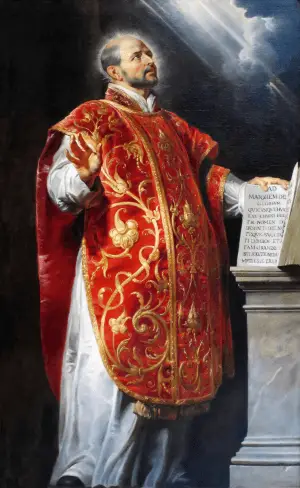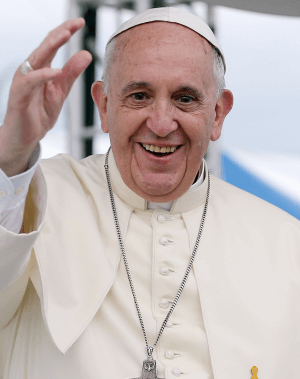Early Christians would have difficulty recognizing the diversity of modern Christianity. In addition to the theological and political disputes that split the early Church, the major denominations also have their own sub-divisions. In Catholicism, different religious and social traditions are carried out by religious orders, which are groups of men or women that band together with the blessing of the Church. One such order, the Society of Jesus, or the Jesuits, is currently in the spotlight due to the election of one of its members to the Catholic papacy. This article will discuss the difference between Jesuits and Catholics, as well as the Jesuits’ role within Catholicism.
Summary Table
| Society of Jesus | Catholicism |
| Founded by Ignatius of Loyola, 1534 | Traces its origins to the Pentecost, 30 AD |
| Religious order of men operating within Catholicism | One of the three major branches of Christianity |
| The head of the Society is Superior-General Arturo Sosa | Current head of the church is Pope Francis, a Jesuit |
| Perceived as liberal in social matters and theology | Perceived as conservative in social matters and theology |
Definitions
Jesuits

While recovering from injuries sustained in battle, the Spanish soldier Ignatius of Loyola decided to devote his life to being a soldier of God. In 1534, Loyola and his friends sought approval from the Pope to go on a pilgrimage to the Holy Land. When war broke out between Venice and the Ottoman Empire, the group decided to preach in northern Italy instead, and took the name “Society of Jesus“. Soon, the Vatican allowed the Jesuits to expand their ministry to the rest of Europe and the colonies.
The young religious order played a huge role in spreading Catholic education throughout Europe. Scholars believe that the Jesuits’ zeal for mission work helped in halting the spread of Protestantism in Eastern Europe. To this date, the Jesuits still wield some degree of influence in Rome, and the Superior-General of the Society is commonly known as the “Black Pope”. This nickname refers to the black cassock that members of the Society frequently wear.
As European countries started colonizing the rest of the world, Jesuit missionaries went with them. In Asia, the Jesuits were particularly active, especially in Japan, India and the Philippines. In the Americas, they established a foothold on the Atlantic coast as well as the Midwest. They established a worldwide network of schools, colleges and universities well-known for classical studies and theology. Today, Jesuit educational institutions are highly regarded throughout the world. Members of the order engage in scientific and academic pursuits outside of their work as priests. The Society of Jesus has a reputation for being more liberal and militant than other religious orders.
Jesuits are comprised of chaplains, pastors, teachers, astronomers, doctors, and more. Their focus is teachings that care for the whole physical, spiritual, and mental parts of each person.
Not everyone can become a Jesuit. Anyone interested in joining the Jesuit order must go through a strenuous selection process first. It’s necessary to express an interest in the organization by contacting the Jesuit vocation director. From there, it’s necessary to make an application and go through the selection process. In the end, it’s necessary to take four vows: poverty, chastity, and obedience. The fourth vow deals specifically with obedience to worldwide missions.
Catholics

Catholics commemorate the Pentecost (ca. 30 AD) as the official start of the Christian ministry. However, it could be said that modern Catholicism started in the 11th century, when the eastern branch of Christianity broke off from the western church due to theological and political differences. Over the centuries, the church spawned a number of religious orders, such as the Augustinians, the Dominicans, the Franciscans and the Benedictines. These orders preserved both the writings of the early Church and secular knowledge, such as Greek philosophy and the sciences.
The Pope assigned certain orders to specific areas of Europe to conduct missionary work. For example, the Dominicans sought to evangelize Spain, while the Benedictines established abbeys in France. As the Europeans looked to colonize the rest of the world, the religious orders went with them as well. Thanks largely to the efforts of these religious orders, Catholics now form the single largest group of Christians in the world.
What Do Catholics Believe?
Catholicism is the largest Christian denomination in the world. As far as their beliefs, Catholics believe in the teachings of the Bible and follow the directions of Jesus Christ, the Son of God. They also believe in the holy trinity, which includes God the Father, the Son, and the Holy Spirit. They also venerate Mar, the mother of Jesus.
The Catholic church also believes in the Eucharist and water baptism; they also believe in life after death and that people will live for eternity in heaven or hell.
Jesuits vs Roman Catholics
So, what are the differences between Jesuits and Roman Catholics?
One of the main differences between the Jesuits and Catholics is that Jesuits are a religious order within the Catholic Church. The differences between them would lie mainly in their advocacies and political beliefs. While many people view Catholics as being socially conservative, many perceive the Jesuits as being more progressive than other religious orders.
Thus, Jesuit institutions have a reputation for being bastions of liberal thought, at least compared to other Catholic institutions.
Because of this perception of liberal leanings, the election of Jorge Mario Bergoglio of Argentina, a Jesuit, to the papacy sent shock waves throughout the world. This was especially shocking because his predecessor, Pope Benedict XVI, held conservative views on most issues. Bergoglio took the pontifical name “Francis” in homage to Saint Francis of Assisi, whom Catholics revere due to his simple lifestyle and humility.
Almost immediately, Pope Francis started focusing on global issues such as climate change. At the same time, however, he restated Catholic doctrine on matters such as homosexuality and the ordination of women to the priesthood. Most Jesuits tend to be moderate on these matters, with some choosing to go either left or right of the Catholic position.
Why are the Jesuits Considered Bad?
Protestants considered Jesuits bad because they were the main front of the counter-reformation movement (1545-1700). This was the Catholic Church’s response to the Protestant Reformation (1517-1648).
During this time, Jesuits were teaching about Catholicism by raising opposition in universities and schools and making it almost impossible for Protestants to have an equal impact on these institutions.





